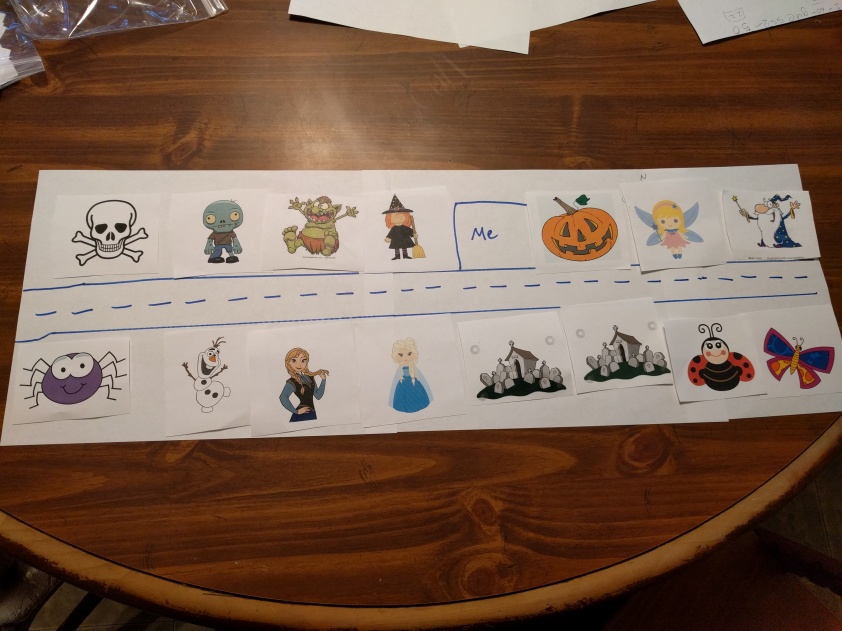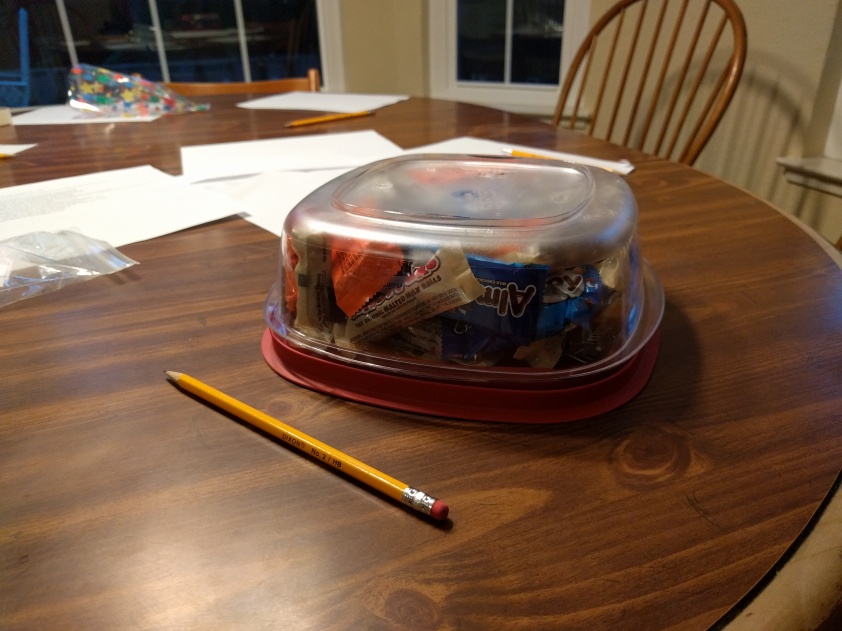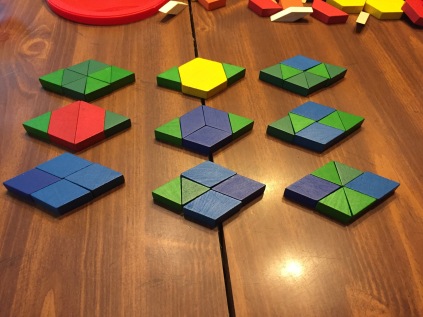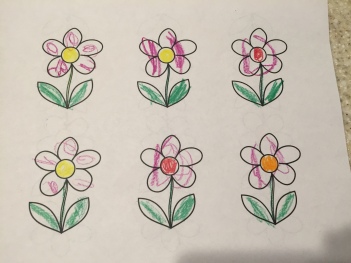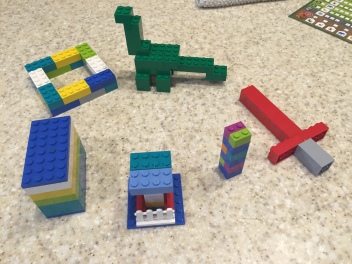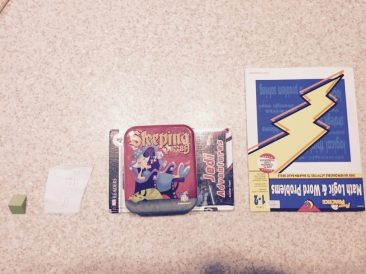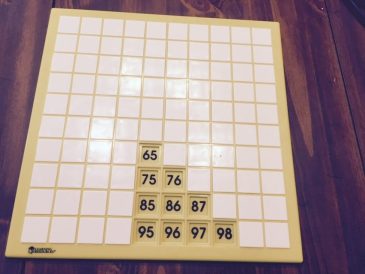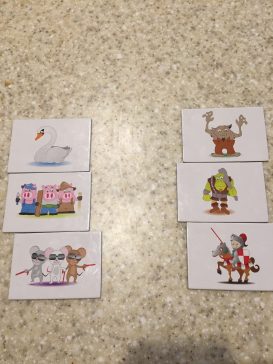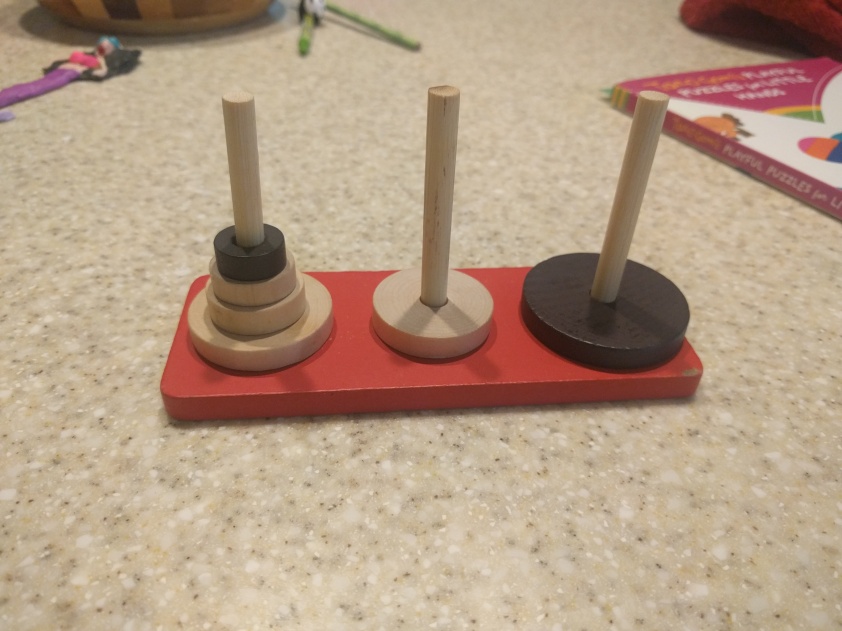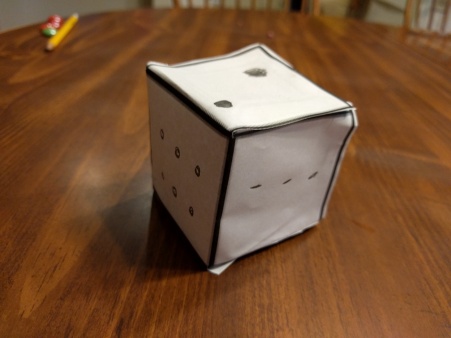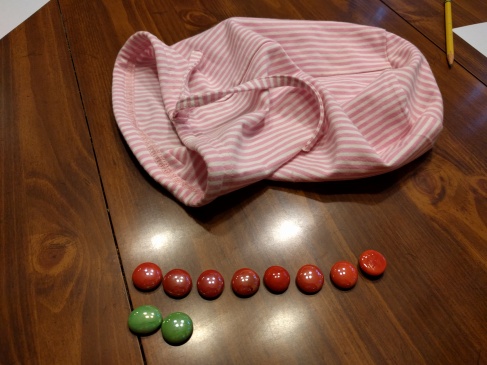The Activities
- Topic: Time: Book: At The Same Moment, Around The World by C. Perrin. After we read the book, I asked the kids for different places they had visited and we figured out what time it was there. Also I asked why sleeping was more difficult after a long trip.
- Topic: Probability: We did probability charts with two six-sided dice. Each kid had a chart, and repeatedly rolled the dice and filled in a box (from bottom to top) for that number. Once one of the numbers gets to the top (5 rolls) that number “wins”. Most of the kids did 2-3 charts, and then we checked to see what numbers had won most often.

- Topic: Puzzles: Each kid got a Tower of Hanoi set, and they tried to solve as many discs as they could.
How Did It Go?
We had four kids this week. The kids were all very engaged the whole time.
At The Same Moment
The kids got the idea of the book and liked naming the places they had been. All of them have been on very long trips so the idea of time zones and figuring out the time in another place was pretty natural for them. They were also quite familiar with jet lag, particularly the ones who had gone halfway around the world.
Probability Charts
This is always a popular activity and this week was no exception. One of the kids immediately asked why there was a 13 and 14. The kids went at wildly different speeds — in the 20 minutes we did this activity, one kid finished 4 and another finished only 1. The kids are pretty good at adding up the dice now, but some still need to think a bit for the bigger numbers. At one point, one kid noted that someone else’s chart looked like a pyramid (which is exactly what it looks like “in expectation”). As expected, we had lots of charts with 6, 7, and 8 winning; I asked them why and they didn’t have a good answer. One kid noticed that a different kid had two winning charts with “8”, so I asked whether it mattered who rolled the dice. The kid said “I don’t know” and then “I don’t think so?”
Tower of Hanoi
The kids really made a lot of progress during circle. Two of them started with 5, solved 6 without too much trouble; one of them finished 7 by the end of circle while the other almost did. Another kid started with 4, and after getting the hang of it solved up to 6. The final kid had a lot of trouble with 4, so I helped them with 3, then 4, and they were able to solve 5 by the end of circle. They all worked hard solving the problems and were clearly getting the idea of moving piles in order to clear up the discs they needed to move.
